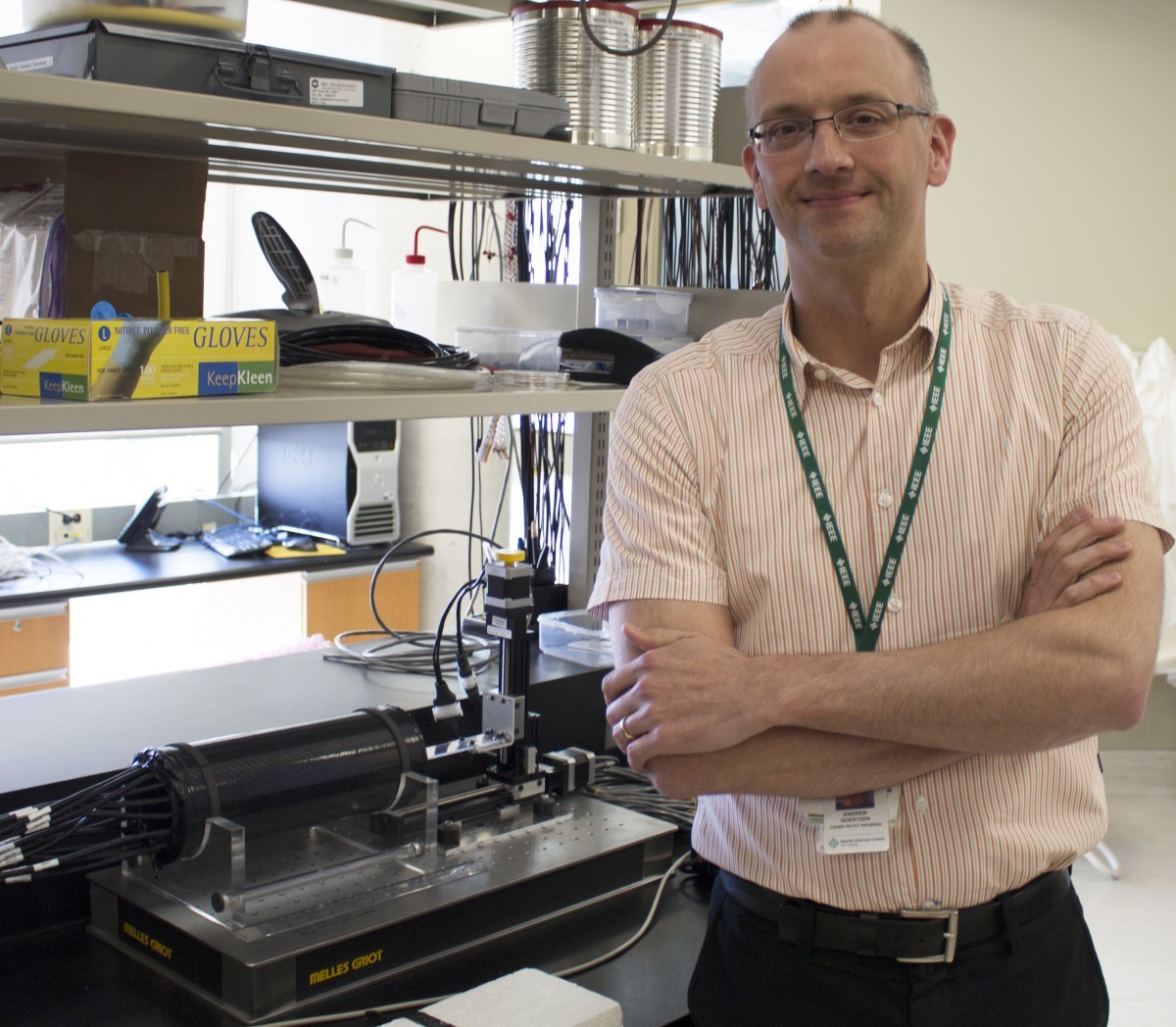
New imaging technology developed by Dr. Andrew Goertzen’s team will be marketed by a Winnipeg company.
Local company to market U of M imaging technology
A new technology developed by University of Manitoba researchers will provide more comprehensive data to combat disease.
The MR Compatible Small Animal PET Scanner will be produced by Cubresa, a Winnipeg company that markets imaging tools to examine biomedical processes in live animals.
“The unit is actually a PET (Positron Emission Tomography) scanner – a nuclear imaging system – and it’s designed to specifically look at mice,” said Dr. Andrew Goertzen, Associate Professor of Radiology at the University of Manitoba.
According to Goertzen, this kind of imaging technology is particularly useful in detecting tumors.
“For humans, PET imaging is generally used for oncology imaging. Over 95 per cent of our clinical workload is oncology staging and assessment of response to therapy,” Goertzen said, noting that the other five per cent is centred on neurology, usually seizure disorders or mild cognitive impairment.
For this particular scanner, a radioactive tracer is injected into the subject that emits positrons. As the positrons decay, they produce two gamma rays that are detected simultaneously.
“The effect of this process is that this tracer gives you a map of metabolic activity,” Goertzen said. “It’s so useful for oncology because tumors tend to be very metabolically active.”
“This new imaging technology will help scientists and medical professionals discover new insights in disease research,” said Dr. Brian Postl, Dean, Faculty of Health Sciences & Vice Provost (Health Sciences). “The work of Dr. Goertzen and his team reinforces the University of Manitoba’s reputation as a centre of medical research excellence.”
Goertzen recently returned from Italy where Cubresa was displaying the new scanner. The company will also be featuring the scanner at upcoming conferences in Toronto and Baltimore.
“Cubresa is quite committed to the product,” Goertzen said. “I’m quite happy with how this is moving forward.”






